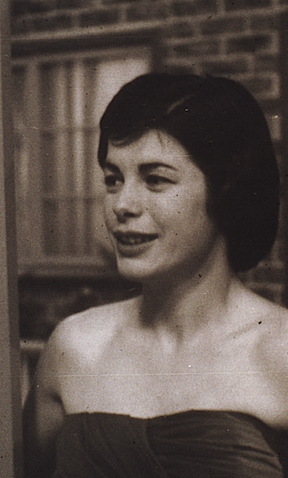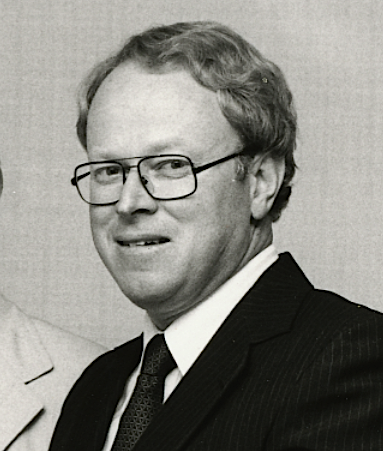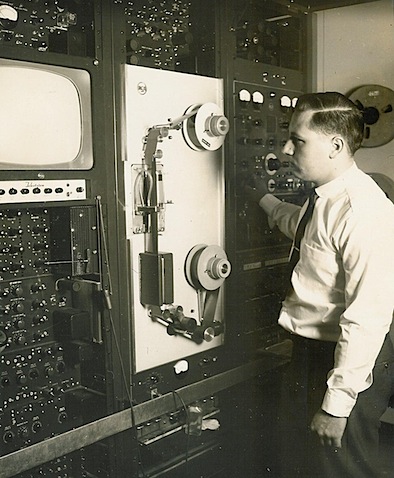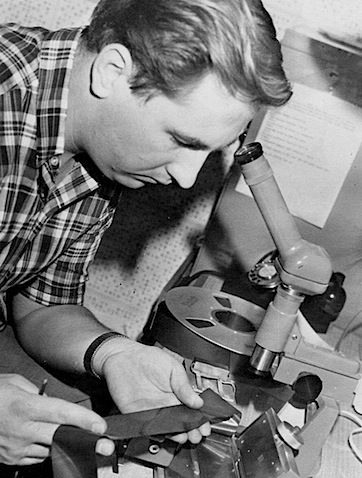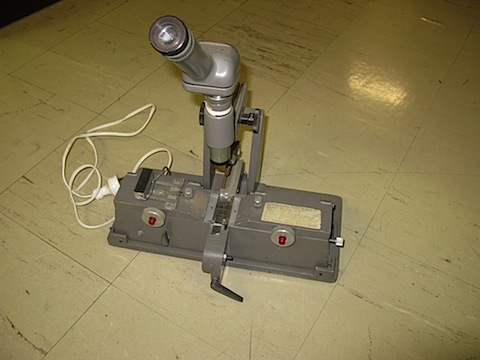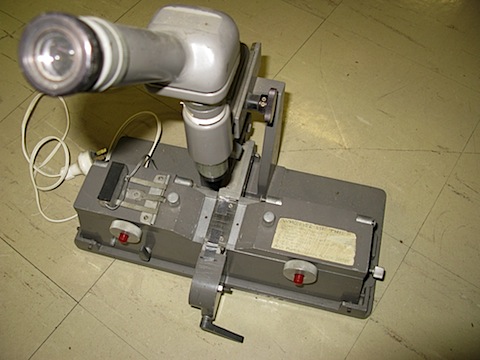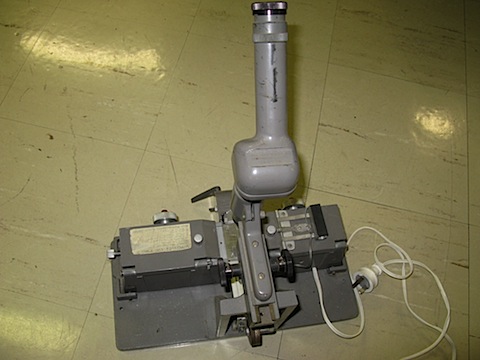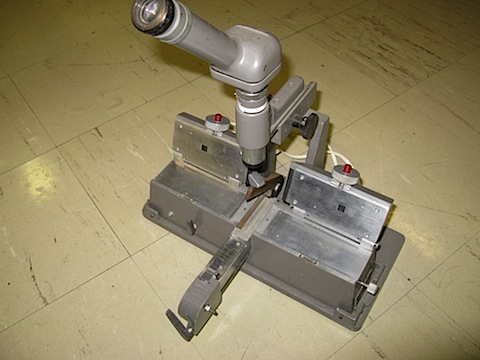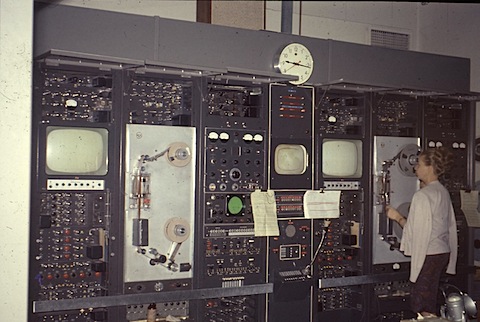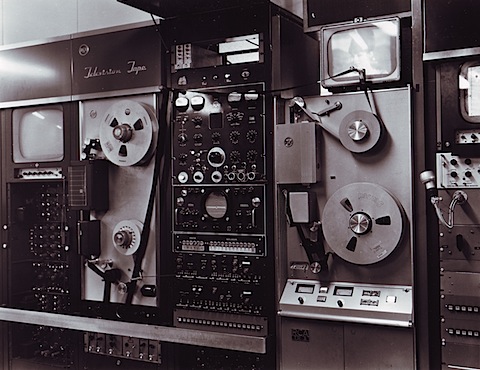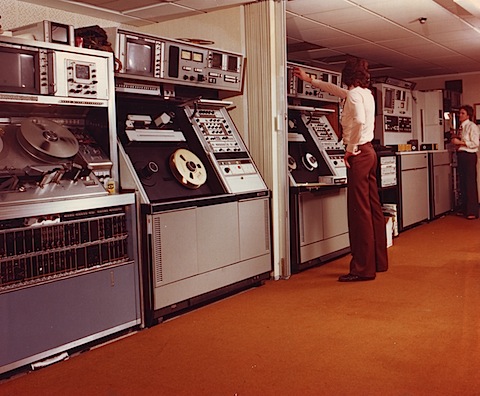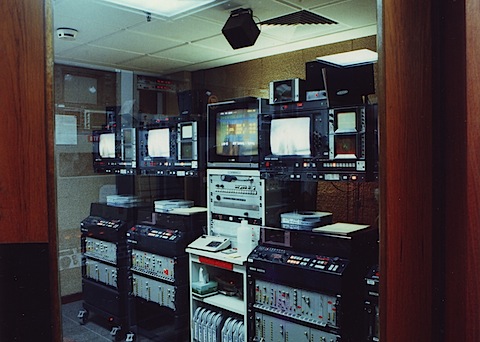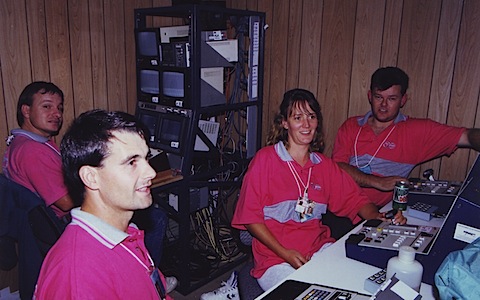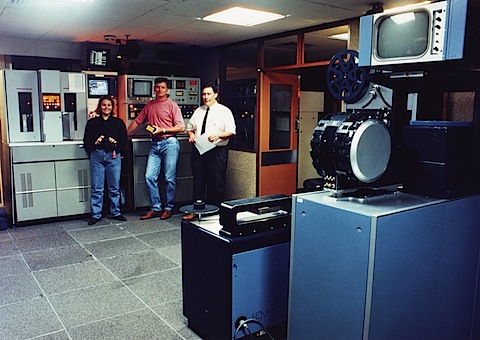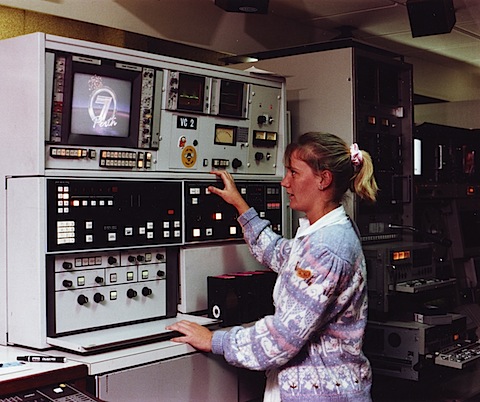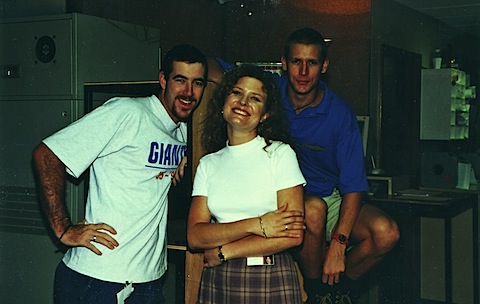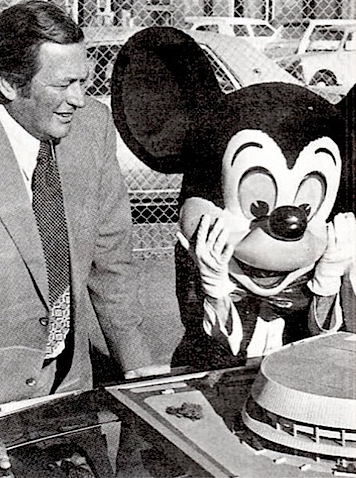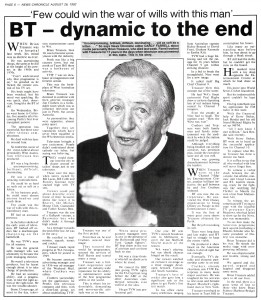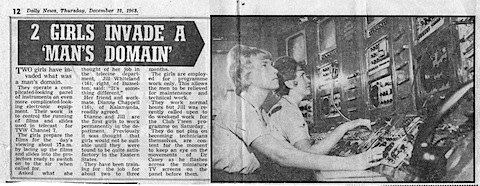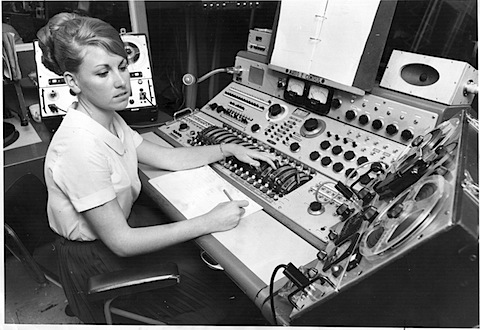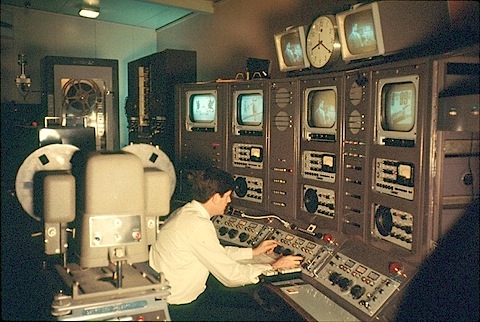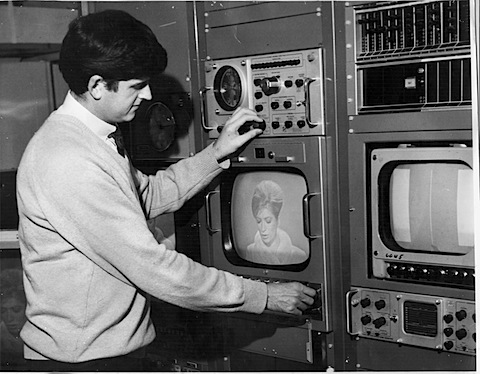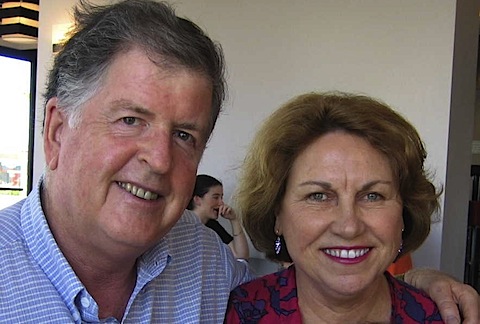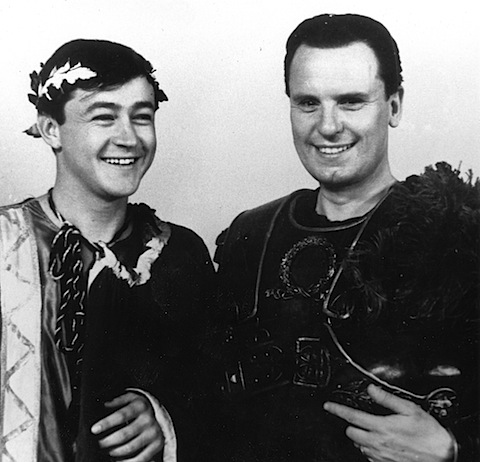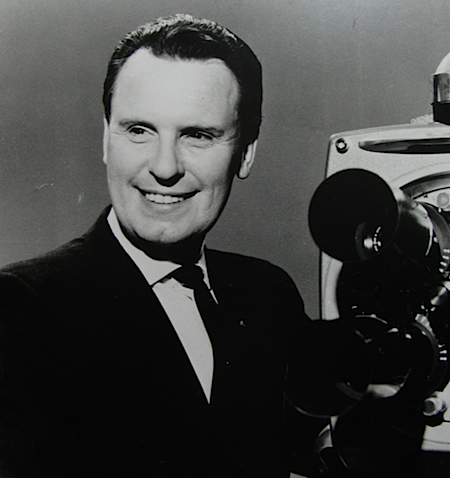
Lloyd Lawson
Lloyd Lawson was born in Kalgoorlie on 18th of October 1922, and died in Perth on 19th of November 2004.
Lloyd was the oldest of three children of Doris and George Lawson, who had a drapery shop in Corrigin (years later an STW workmate, Publicity & Programs Manager June Holmes, pointed out that she was born in Corrigin and her mother knew Lloyd and his parents quite well).
Owing to a sinus condition, Lloyd was sent down to Perth to live with his grandparents and attend the Perth Boy’s School.
Lloyd’s broadcasting career started at Radio 6PM at the age of 17, as a cadet announcer and junior salesman. After World War II, Lloyd joined 6KY as a night announcer, then in 1948 became Manager of 6KG in Kalgoorlie, and three years later married his secretary Laurel Baker, who was also a night announcer.
Lloyd and Laurel moved to Melbourne and radio station 3UZ in 1956 where he became assistant to the manager. Laurel was also employed as a typist and relief announcer.
In an interview with Peter Harries, Lloyd related the story of being appointed TVW Programme Manager, where on Boxing Day 1958, TVW’s Chief Engineer Graham Davey knocked on Lloyd’s front door and asked if he was interested in flying back to meet the TVW Board of Directors, who in turn selected Lloyd for the position.
On returning to Melbourne, Lloyd handed in his resignation at 3UZ and embarked on a television production techniques course with another Perth local, Richard Ashton, at the Royal Melbourne Institute of Technology. Lloyd was instrumental in Richard gaining employment at TVW, by alerting him to Jim Cruther’s presence in Melbourne. Lloyd embarked on a fact finding mission, watching ‘behind-the-scenes’ of the ‘Graham Kennedy Show’ at GTV9 and the ‘Bert Newton Show’ at HSV7 in Melbourne and visited stations in Sydney. Coralie Condon was in Sydney at the time finding the going difficult, not having the vast range of contacts she enjoyed in Perth. Whilst there she got a telegram to meet with Lloyd Lawson, and during her meeting she thought “there’s no place like home”, so Coralie returned to Perth and agreed to work for TVW.
Lloyd returned to Perth in June 1959, and within a week of Coralie returning to Perth, both were in Newspaper House busily auditioning on-air presenters with Beverly Gledhill in late July. By the last week of August, Richard Ashton had returned to Perth too.
On Monday August 31st, the test transmissions were advertised for the first time, featuring the TVW test pattern being broadcast at full signal strength. By now Richard Ashton was assisting Phil Salinger at the transmitter. Full power trade transmissions commenced on September 4th, with the first trade transmissions emanated from the studios on the evening of September 17th.
About two weeks before the station opened, Lloyd was to make a brief unscheduled announcement to conclude the trade transmissions and introduce a film taken only hours before, but there was a hitch which caused a 20 minute delay, leaving Lloyd to ad lib frantically whilst the floor manager made time stretching gestures. As a result, Lloyd became the first person to represent TVW in a live on camera situation, before the official opening on Friday, October 16th, 1959.
This is how Lloyd Lawson related the event to Peter Harries…
“Oh! After we’d been doing these trade transmissions and of course the reason they had the trade transmissions was that nobody had ever seen a bloomin’ television programme so how did they sell television sets? So we got permission to go on the air for a certain number of days – hours, I can’t remember now, only a few hours, late afternoon and early evening. So we went around, we went to the Education Department, and we went to B.P., and Shell and whatever and anybody that had travelogues and we borrowed them, their 16mm stuff. So we were showing film after film after film, where-ever we could lay our hands to it, then all of a sudden Jim Cruthers, has; (we had to close down a week before, we had to do final adjustments at the transmitter) Jim Cruthers suddenly said, ‘I’m going to send a camera around and take pictures of people sitting in front of Boans and all these shops that were showing television programmes, take pictures of everyone sitting there with their arm-chairs and their Thermos-flasks and their rugs, and if there’s any house that looks like it’s got, or they could find out that people had televisions already installed, knock on the door, poke the camera inside, take pictures and race it back to the studio, because this was all on 16mm, process it and put it to air and bring up a ‘live’ camera for the very first time in Western Australia. So because I’d had radio experience and the other thing was, going down our staff, Jim came from newspapers, Treasure from newspapers, Frank Moss was an accountant, um, David Watson and Graham were the only ones who’d had any television experience. Film manager Bob Pennell came from Queensland. Darcy Farrell was news, so I was about the only bloke that had any radio experience so Cruthers said, ‘We’re going to put you up on camera, just for a few minutes,’ he could see I was panic-stricken, he said, ‘just for a few minutes,’ he said, ‘to say “Right! We’ve come to the end of trade transmissions, we’re going to open up in a week’s time, just to show you what’s going on in Perth, here’s a film which we shot a few hours ago and we’ll see you in a week’s time and goodnight!’ Well, I got to the bit where we were going to show the film and for the first time in Western Australia somebody got the ‘stretch’ sign and this bloody ‘stretch’ sign went on for twenty minutes. Well, I was in flap! What are we going to talk about? So we talked about the studio, we shot, the camera looked up and showed the ‘grid’ and all the rest of it. We opened the studio door and showed them the corridors down there and all the rest of it. Coralie, about half way through happened to stick her head in the studio door and I dragged her in and we talked about what was going to happen on opening night and after about twenty minutes came the ‘wind-up’ so with great relief we wound up, or I wound up and we showed the film and so we closed down. So I became the first bloke with his face on television.”
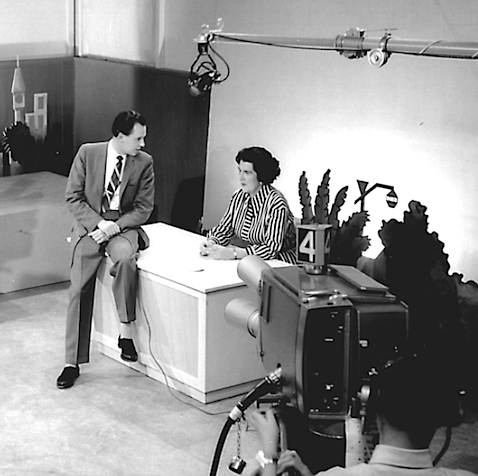
Lloyd Lawson and Coralie Condon at TVW
Following the disastrous Dwellingup fires of 1961, Lloyd suggested that TVW support the Lord Mayor’s distress fund by using the reach and persuasion of television to appeal for donations from the viewing public. He emphasized the goodwill that could be achieved in pursuing this course of action. This was TVW’s first venture using it’s considerable influence for charitable purposes… a trend which continues to this day with Telethon… an institution Lloyd was to support in later years.
Lloyd juggled many hats in the early days, being the Programme Manager, an on-air personality and even tried his hand at presentation coordination and program directing. Lloyd would direct Rolf Harris’s “Relax With Rolf” on Monday nights, which was produced by Rolf and Coralie. He directed “Oriental Cavalcade” which featured the Rudas Damcers and a cast of twelve different acts. For a while he directed “Teen Beat”. In 1960, Lloyd did three or four “Sunday Night With Bobby Limb” programs, when he came across from the east with a cast of twenty-six. The shows were produced by Bobby Limb. Lloyd was also involved in a number of O.B’s including Bob Menzies election campaigning where on this occasion a bloke yelled out ‘I wouldn’t vote for you if you were the Archangel Gabriel!’ and Bob came back and said, ‘If I was the Archangel Gabriel you wouldn’t be in my electorate!’
Lloyd was the regular on-air front man for TVW on special occasions, and sometimes for all occassions, as he pointed out to Peter Harries…
“Oh! On the days that you were doing the Today you’d be there in the morning to do rehearsals and so-forth, but the worst day I ever had – the longest day – I did the Today programme and we finished the programme and I went straight up and pushed the buttons for The Mickey Mouse Club with Children’s Channel Seven and that always used to finish with a graphic on the floor of the Mickey Mouse insignia and as the camera moved in and got a close-up, they rolled telecine and matched up with the opening of the thing. I left the booth and I went to News to rehearse some of the 16mm film that we were going to do voice-overs, I read the News, I finished the News, and it was my job to do the Booth shift for the night. Now that’s the worst day, the worst ever!”
Lloyd often presented the News and Weather… and in those days he had to draw his own weather board. He also hosted the ‘Today’ show, which ran from the 14th of March 1960 to 9th of November 1965. Lloyd’s on-air team included Audrey Barnaby, David Farr and Gary Carvolth. They were later joined by Carolyn Noble. The series finished with O.B’s from the Floreat Forum and Victoria Park.
Gordon McColl was most impressed by Lloyd’s self control when events were going wrong during a live program. Reserving his annoyance for after the audience left. Gordon says Lloyd had good relations with the crew, and was good humoured, though at times it was hard to tell when he was being ‘fair dinkum’ or facetious.
Lloyd conveyed the following anecdote to Peter Harries…
“And there’s a classic story told about Gary Carvolth. I was doing the ‘Today’ programme and the home-base, the desk was up against a wall with a window with a photograph of Perth, so that everybody thought you could see Perth from the studio and we were half way through the programme when unbeknownst to the floor-manager or me or anybody else, Carvolth had come in through all the props and suddenly stuck his head in through this window and interrupted whatever I was doing at the home base. And, we had a bit of a by-play and he told a joke. Now the joke was this. This little girl always sucked her thumb and her mother said to her, ‘If you keep sucking your thumb you’re going to blow up and burst!’ and the next day the kid and her mother are on a bus and there’s a pregnant woman sitting on the other seat and this kid looks at the woman and says, ‘I know what you’ve been up to!’ and that was the joke. All hell broke loose! There happened to be a pregnant woman in the studio! Treasure took us – Brian Williams, Carvolth and myself out into what was then the car-park – it’s now covered up by a studio and he had us up against a brick wall. We looked like we were going to be shot at dawn! And I remember distinctly, he said first of all to Carvolth, ‘You’re too bloody stupid to know what you’ve done anyway! So we’re going to ignore you! Then he said to us, to Brian Williams and me, he said, ‘If this happens again you’ll both be looking for jobs!’” “And somewhere I’ve got a memo he sent me and I was always going to show it to him before he died and it said, ‘In future any ad-libs that you anticipate using during the show have to be approved before we go to air!’ “
Lloyd Lawson moved to STW in 1966, where he read the news and presented a woman’s program called ‘Roundabout’. Audrey Barnaby joined Lloyd on the program at the beginning of 1966, co-hosting with Veronica Overton.
Jeff Newman and Lloyd Lawson at STW
Lloyd became a household name and Western Australia’s first television star, owing to the reaction of viewers at that time. He was recognised for his rich, resonant and eloquent voice and people treated his personal appearances as significant events.
In 1974, Lloyd left to undertake a number of jobs outside TV. In 1991 he received the Order of Australia for services to the aged.
Lloyd, who was a teetotaler, became very involved with the Wesley Church in Perth, and was appointed a lay preacher and marriage celebrant. Officiating at the funeral of Audrey Barnaby’s late husband Geoff Long in 1999.
Lloyd was also the Master of Ceremonies at the wedding of Sarra Jane Gill, the daughter of Channel 7 personalities Bill Gill and Janet Prance.
Lloyd Lawson, who died after three years of illness, was survived by his wife Laurel, their daughters Alexandra and Robyn, and families. Laurel has now since passed away.

